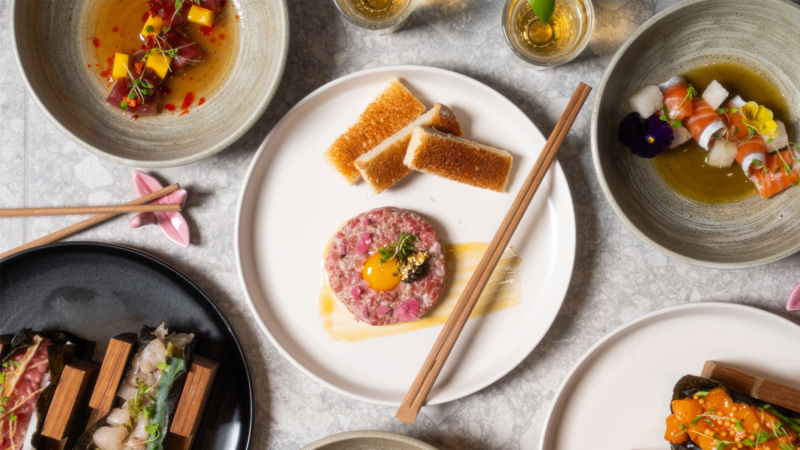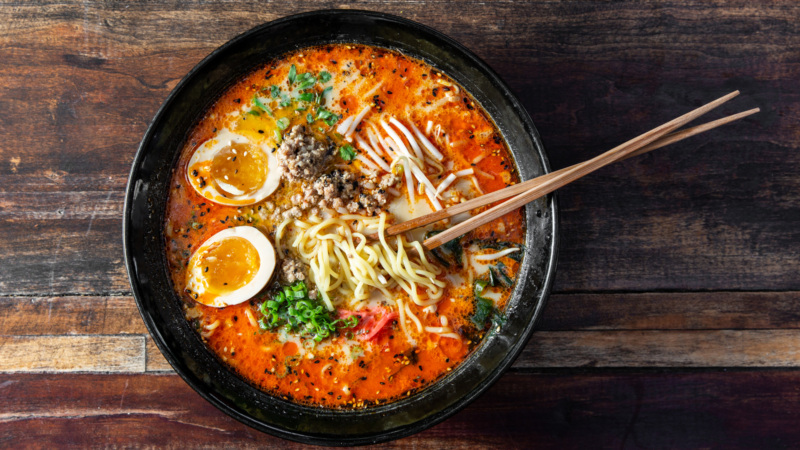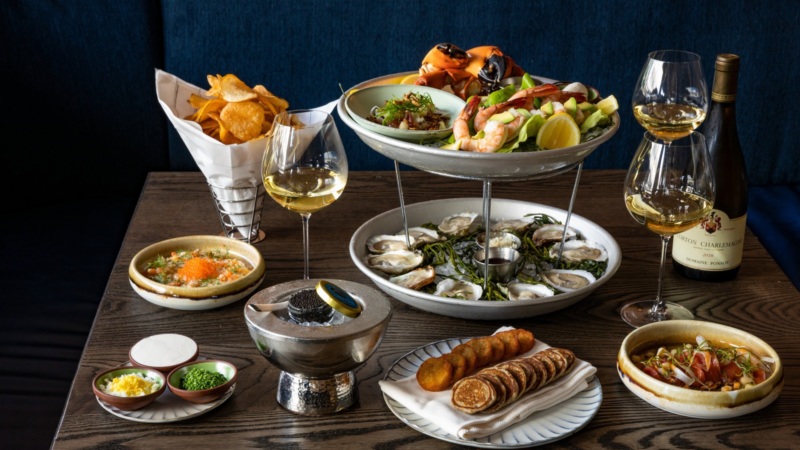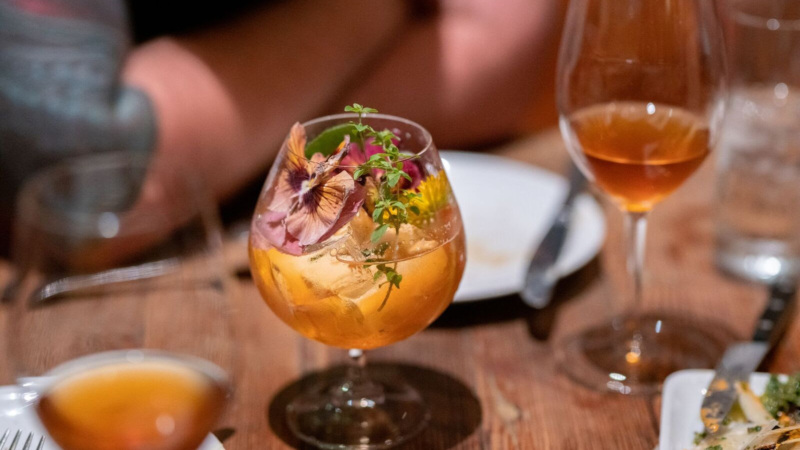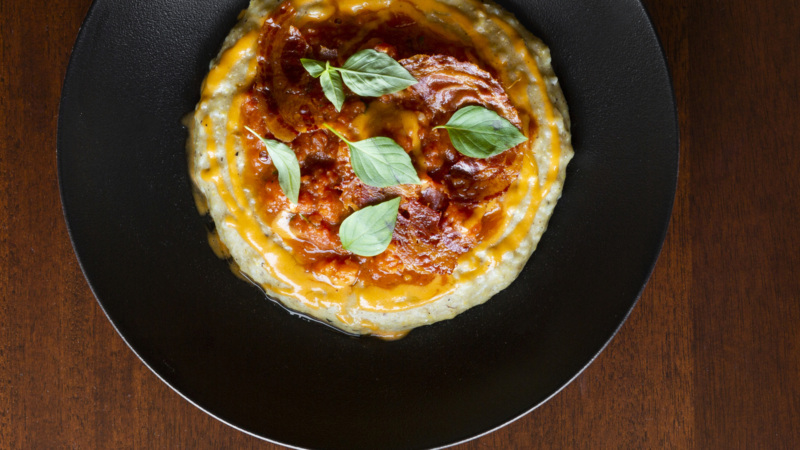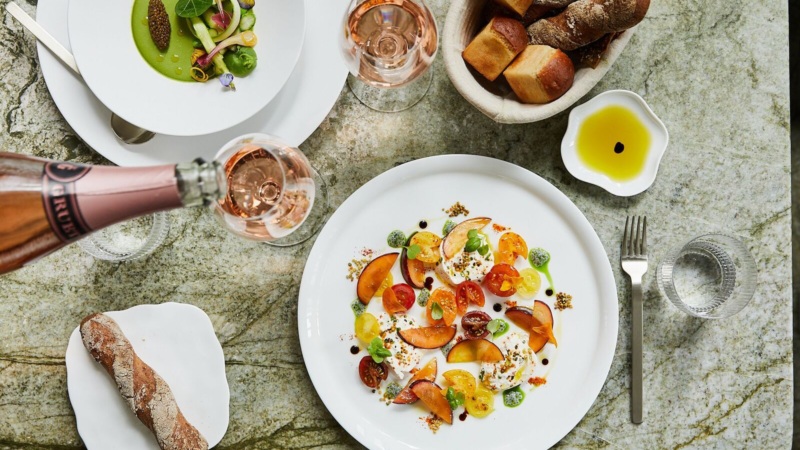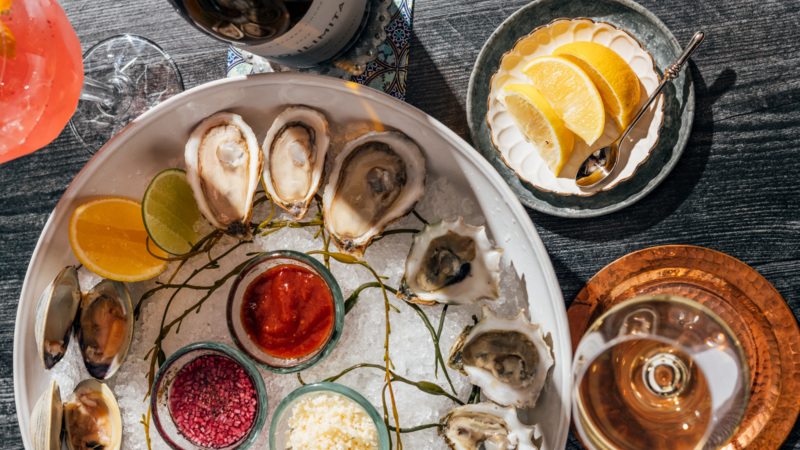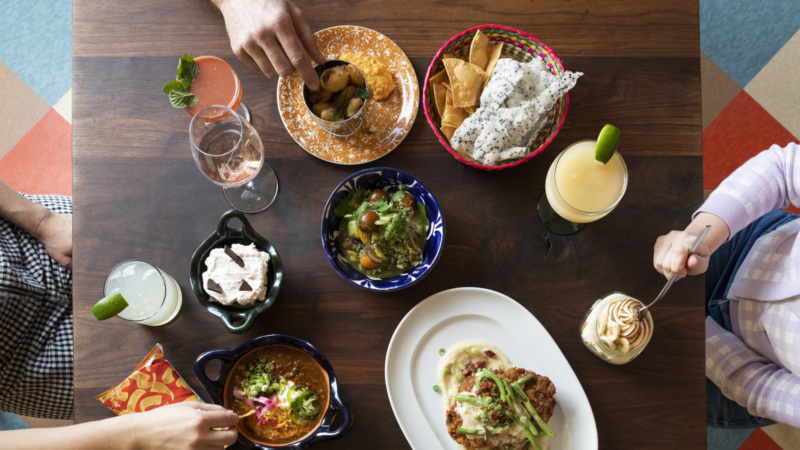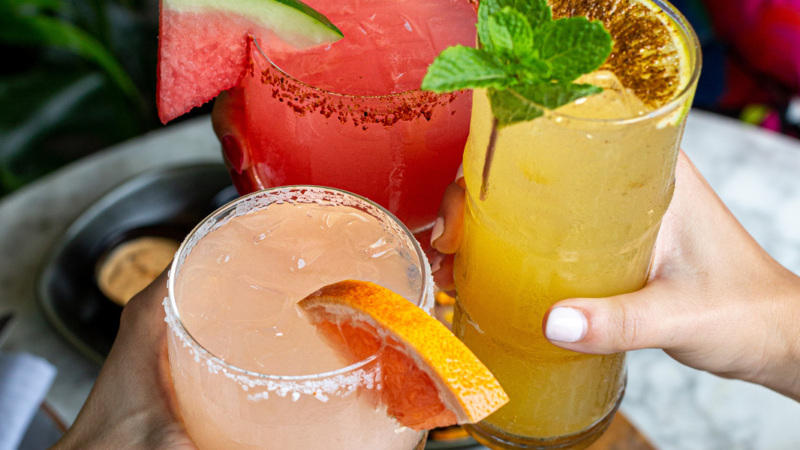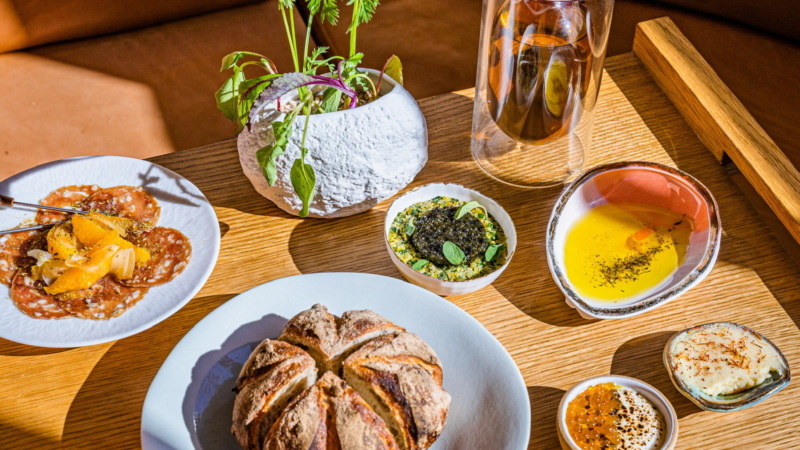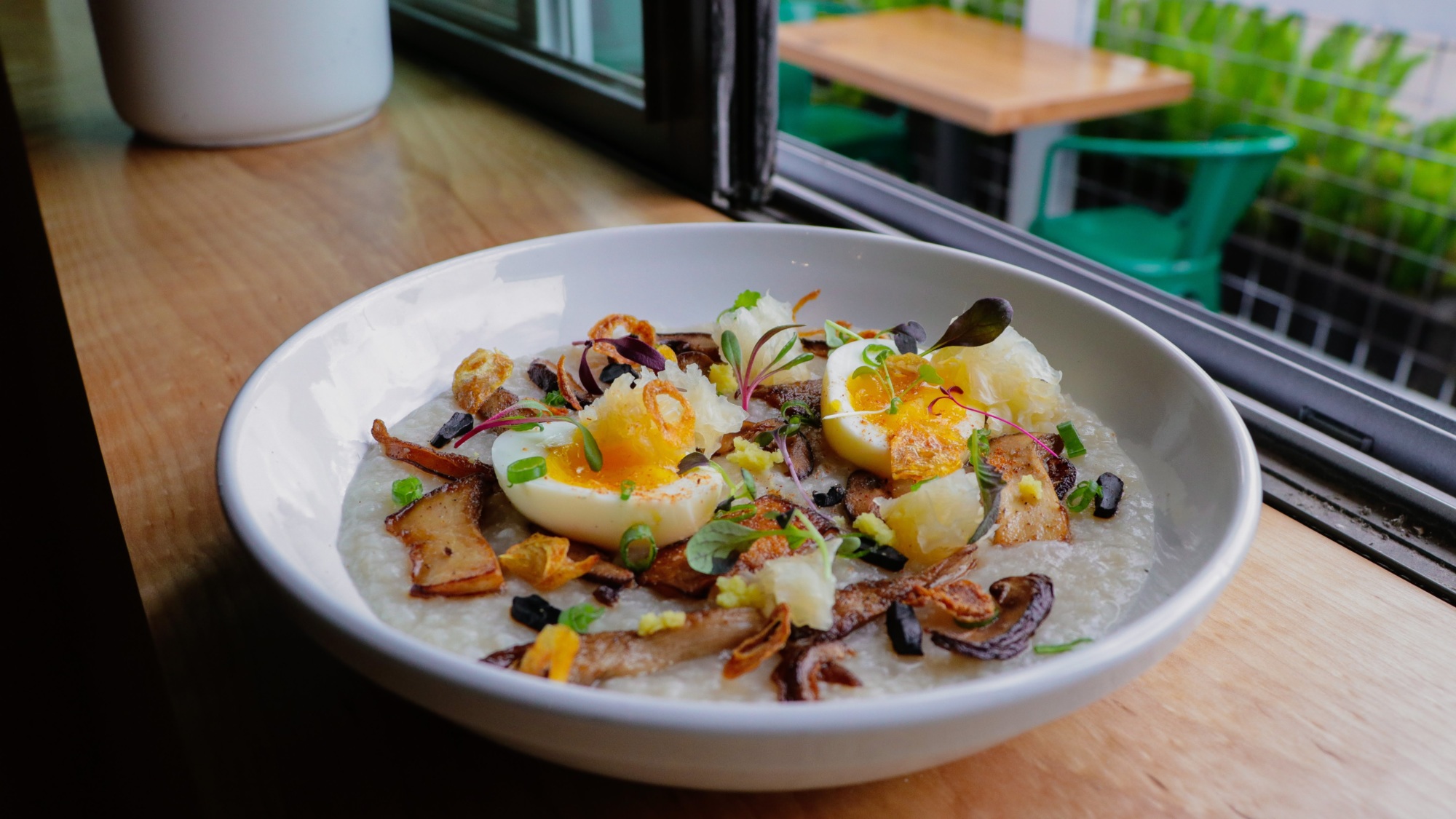
Xin Chao’s Homage to Vietnamese Home Cooking, As Seen Through Five Dishes
For Christine Ha, owner of acclaimed Houston restaurants The Blind Goat and Xin Chao, cooking has always been deeply personal. Ha, best known as “the blind cook” who won season three of Fox’s “MasterChef” and made a fan of the notoriously tough Gordon Ramsey, lost her mother to cancer when she was just 14. And that devastating loss also meant that all the home-cooked Vietnamese food that Ha grew up eating was suddenly gone, too. Since then, the chef taught herself to cook and has spent decades trying to replicate her mom’s recipes.
“Trying to reverse-engineer my mom’s recipes has been a lifelong journey,” Ha says. “I have memories of her food, but really, I just learned the traditional recipe for a certain dish and then think back, like, OK, my mom used a different cut of meat or a different ingredient … I wouldn’t say I’ve been able to get any of them exactly like her, but I think it’s still honoring her in the fact that I’m trying. But then, we are of a different generation, so I think it’s also cool to be able to put my own spin on things and apply my own sensibility to the food as well.”
And that’s exactly what Ha and co-executive chef Tony J. Nguyen, of Saigon House, have done at their latest venture. Xin Chao (which means “hello” in Vietnamese), opened its doors in September amid the pandemic in the original Beaver’s space. The partners have developed a menu that takes their favorite traditional Vietnamese dishes — like braised pork belly, shaking beef, duck salad, and whole fried fish — and imbues them with premium ingredients, local techniques like smoking, and the regional Texas Gulf Coast flavors they also grew up eating. The resulting contemporary interpretations serve as an acknowledgment of where they both came from.
“I can speak personally that growing up, I was straddling the multicultural household, where my parents made me only speak Vietnamese at home, and at school I’d speak English,” Ha explains. “At home, I was getting a lot of Vietnamese food, and at school I was envious of my classmates’ lunches — bologna and cheese sandwiches and stuff — while I had egg rolls or pork belly packed in my lunch.” Further, “I grew up in that generation where we were trying to reconcile our two identities, and we thought it was binary — I’m either Vietnamese or I’m American; I can’t be both.”

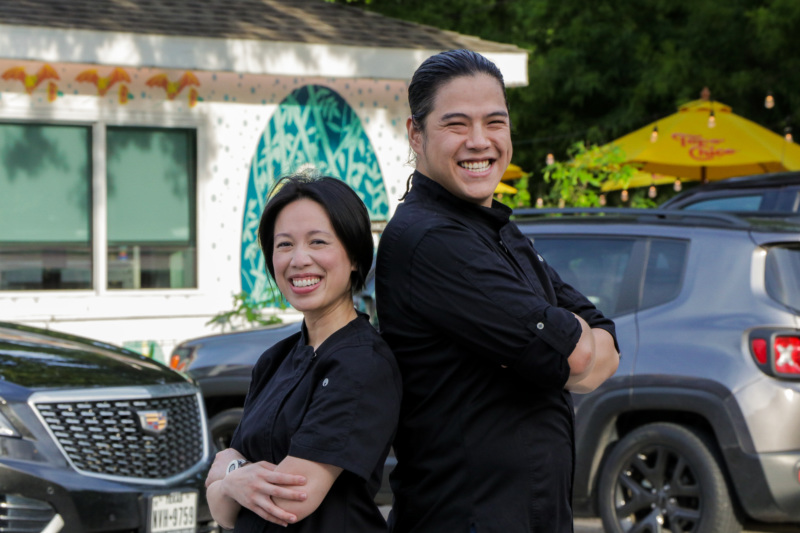
With time, experience, and maturity, however, Ha says she eventually learned to value her Vietnamese heritage. “I look back and really appreciate the labor and the love that my parents, especially my mom, put into putting food on the table,” she says. “This is my way of keeping her spirit alive and acknowledging that I can be both Vietnamese and American.”
In fact, Ha and Nguyen teamed up after bonding over their shared food philosophies and experiences. Both are second-generation Vietnamese Americans whose refugee parents emigrated from Vietnam and who grew up in Houston. Ha had dined at Saigon House after hearing the buzz surrounding Nguyen’s famous Viet-Cajun crawfish smothered in “H-Town Bang” sauce, and Nguyen introduced himself to Ha during a visit to The Blind Goat counter in downtown’s Bravery Chef Hall. After learning that Ha planned to take the egg rolls off the menu on account of being short-staffed, Nguyen showed up at 7 a.m. the next morning to offer his prepping services. Their friendship, and subsequent partnership, grew from there.
Of course, opening a restaurant in the middle of a pandemic wasn’t the original plan. But Ha and Nguyen — along with Ha’s husband and business partner John Suh — rolled with the punches, retooling the menu, adjusting their protocols, and placing more emphasis on the design of the outdoor patio space. The efforts paid off: Xin Chao has been well-received by both the community and food critics alike, and was recently named Best New Restaurant at the 2021 CultureMap Tastemaker Awards. And as Xin Chao approaches its one-year anniversary in September, Ha says they’ll continue to make improvements in the space, the bar menu, and the food offerings.
“I’m not like a seasoned restaurateur by any means, but I feel like this experience has taught me a lot,” says Ha. “I’ve been thrown so many different things all through my life that there’s probably not a challenge I wouldn’t be able to navigate. But it goes without saying that we’re very grateful for the support, just being a local, independent restaurant trying to make it through this time as well.”
Here, Ha shares the inspiration behind some of her favorite Xin Chao dishes and how they honor her Vietnamese heritage and Texas roots.
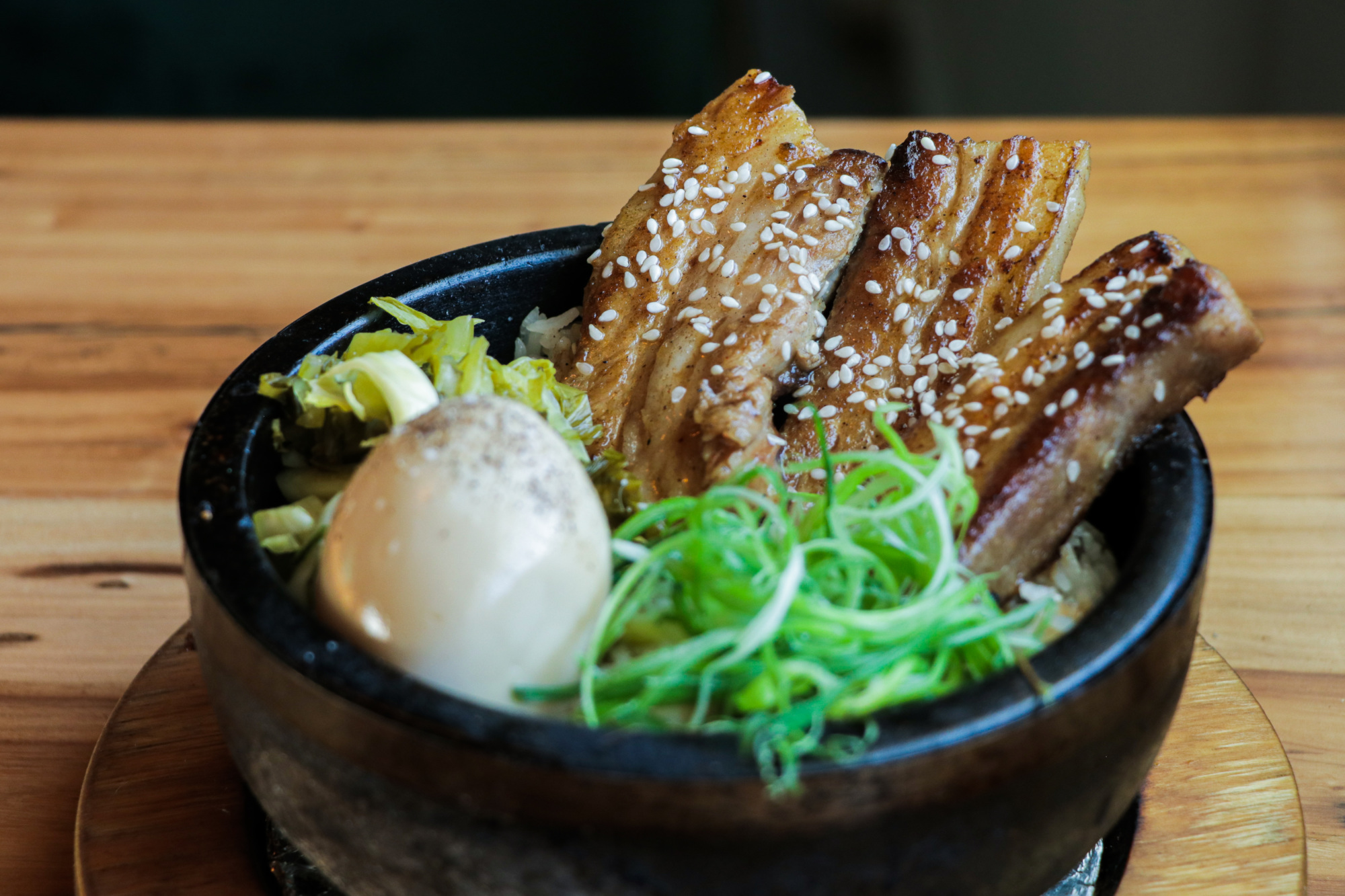

1. Braised Pork and Crispy Rice
“This is something Tony and I both grew up eating quite a bit. It’s such a humble dish and so representative of my childhood. My mom was a working mom, so she was very busy and needed something easy and quick that you could make a huge batch of and freeze. The ingredient list for this dish is short, and back then, pork was very inexpensive. We didn’t get fresh coconut here, so we used Coco Rico coconut soda to make it. We would have it multiple times a month, and it was a dish that no matter what, I never got tired of because it’s just so delicious. It’s my idea of comfort food.
I had cooked it on the finale of “MasterChef,” and it was part of my winning menu of the season. So, it was important for me to serve that at one of my restaurants. We just modernized it. We are doing a soft-boiled egg instead of a hard-boiled egg. We are doing the rice in a hot stone bowl, Korean style, because I like the texture of that crispy rice that kind of toasts on the bottom. The crispy rice is also a nod to my husband’s Korean American heritage. It’s probably one of our most popular dishes.”
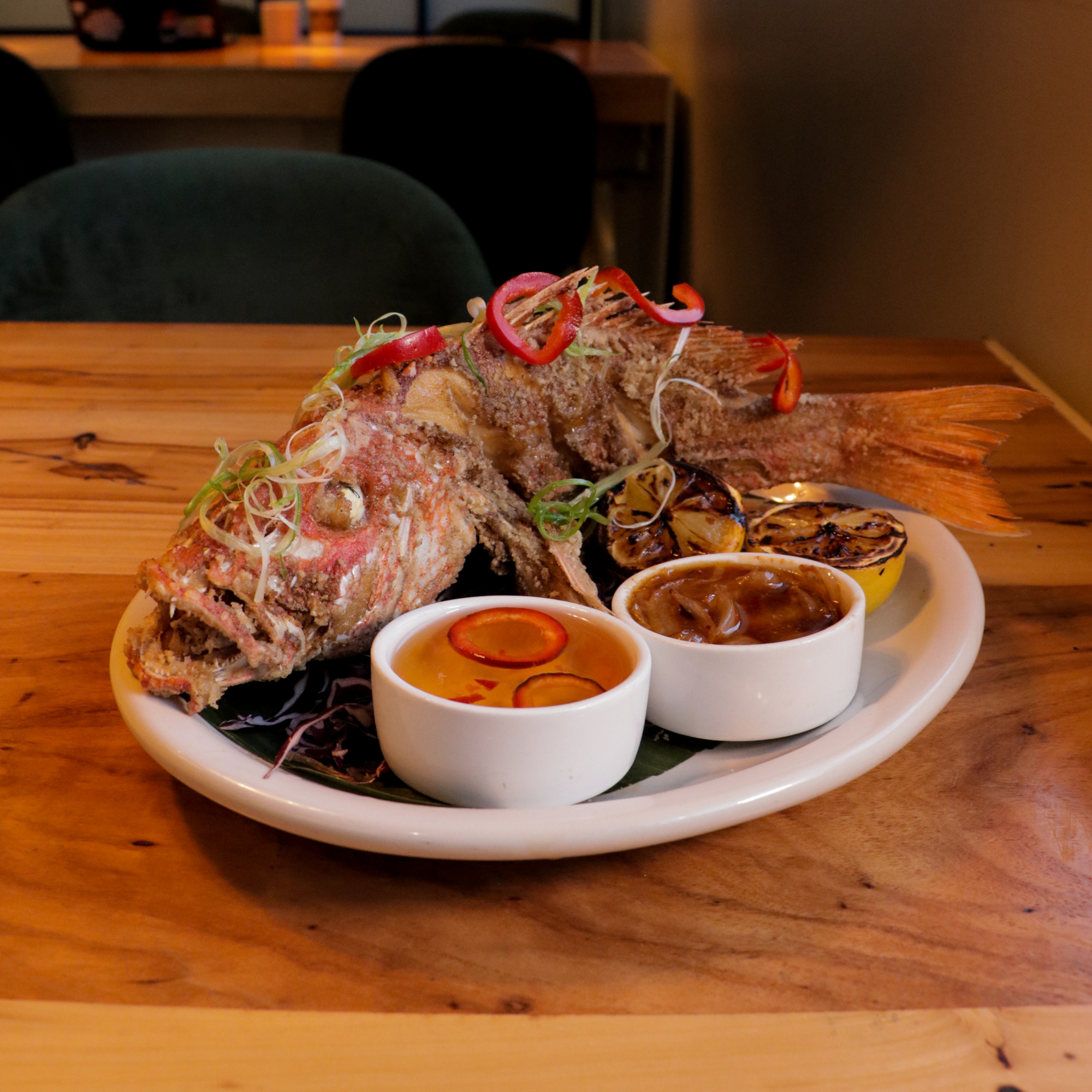
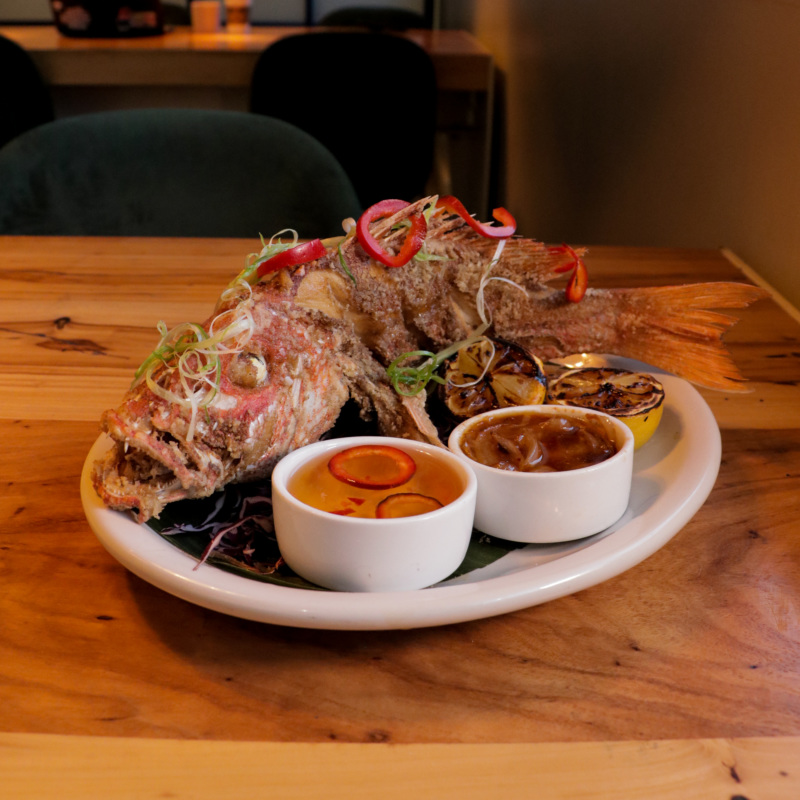
2. FOB Whole Fish
“I give credit to Tony because he’s the one who came up with this. Growing up, ‘FOB’ was like an insult that other classmates would say to me, like, ‘Oh, you’re fresh off the boat.’ But we wanted to take back that term and turn it around from a negative thing — to say like, ‘Hey, when fish is fresh off the boat, that’s a positive thing,’ so trying to take back ownership of what ‘FOB’ means.
Vietnamese people — and Chinese people too — we just love whole fish, eating it whole. And I know some non-Asians fear seeing a whole fish come out with the eyes and tail on it and stuff. This is another one of those dishes where I’m trying to normalize what we love in Asian cuisine.
Whatever the fresh catch of the day is — sometimes it’s red snapper, sometimes it’s black bass — we do a light batter on it, flash fry it so that the skin is crispier. And then it’s served with traditional fish sauce vinaigrette and another, sweeter tamarind dipping sauce as well. For the presentation, instead of the traditional way where you see the fish lying flat on the plate, we do it standing up where it’s kind of curved, so it kind of looks like it’s swimming.”

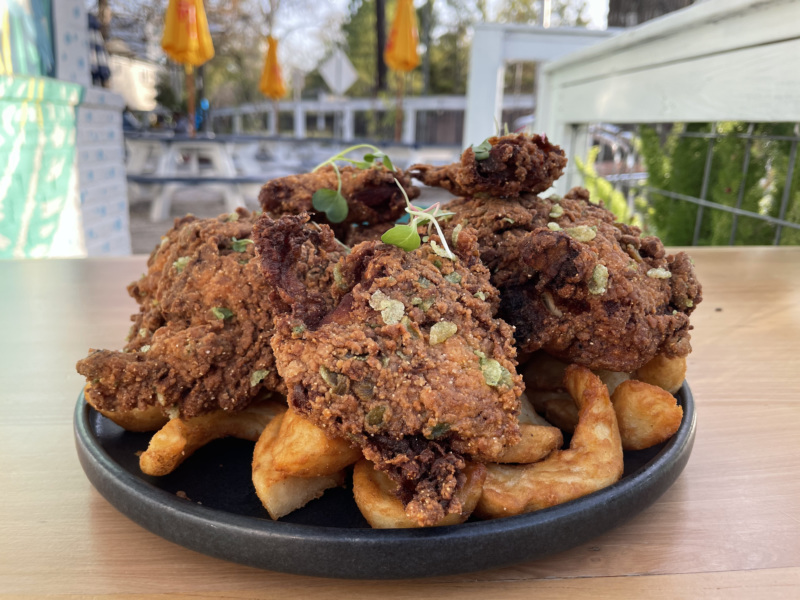
3. Nguyen-er Nguyen-er Chicken Dinner
“Tony named this dish as well, obviously after his surname. When we were developing the menu, we talked about what foods we love and realized that we both love fried chicken. Popeye’s fried chicken is our favorite. So, we said, all right, we’re going to do some kind of Vietnamese spin on Southern fried chicken.
It’s soaked overnight in a buttermilk marinade, which is very traditional for Southern cuisine, but we also add lemongrass to that. And then when we batter, we do a little bit of the toasted pandan rice to add a little bit of color, make it slightly different, and add an extra element of crispness. We serve it with dipping sauces on the side. One is a beef tallow aioli where we use the beef drippings that we get from a lot of the beef that we smoke in-house, and the other one is a hot sate honey. We take the hot sate sauce that we make at The Blind Goat — it has dry shrimp, shrimp paste, fish sauce, sugar, peppers, lemongrass — and we add a little bit of that into honey to make it into a hot honey.”
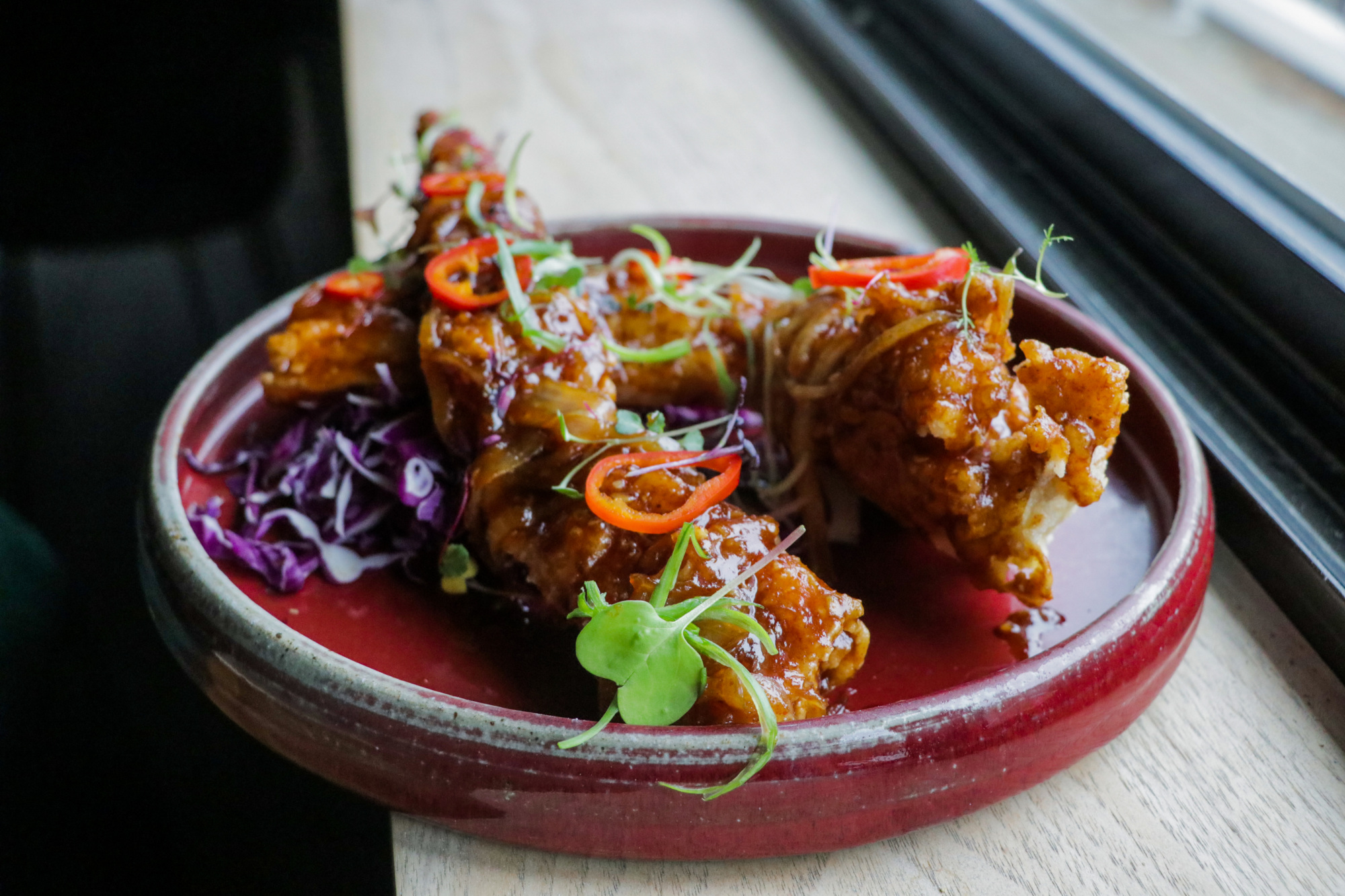
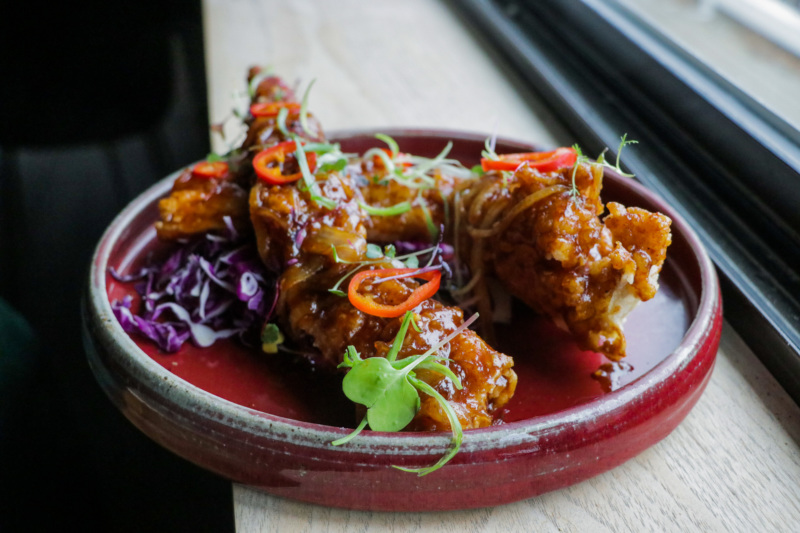
4. Tamarind King Crab
“This dish is special to me because it’s based on street food in Vietnam that I love called Cua Rang Me [a dish where the crab is deep-fried, then stir-fried in tamarind sauce]. I feel like it’s one of the best ways to eat crab. When I visit Vietnam, every time I go, I have to go to this one place that serves the tamarind crabs in Ho Chi Minh City. I just love the idea of eating that and mopping up the sauce with some bread and then having a beer. We took the essence of the tamarind crab and use Alaskan king crab to up the ante on that dish and make it much more gourmet.”
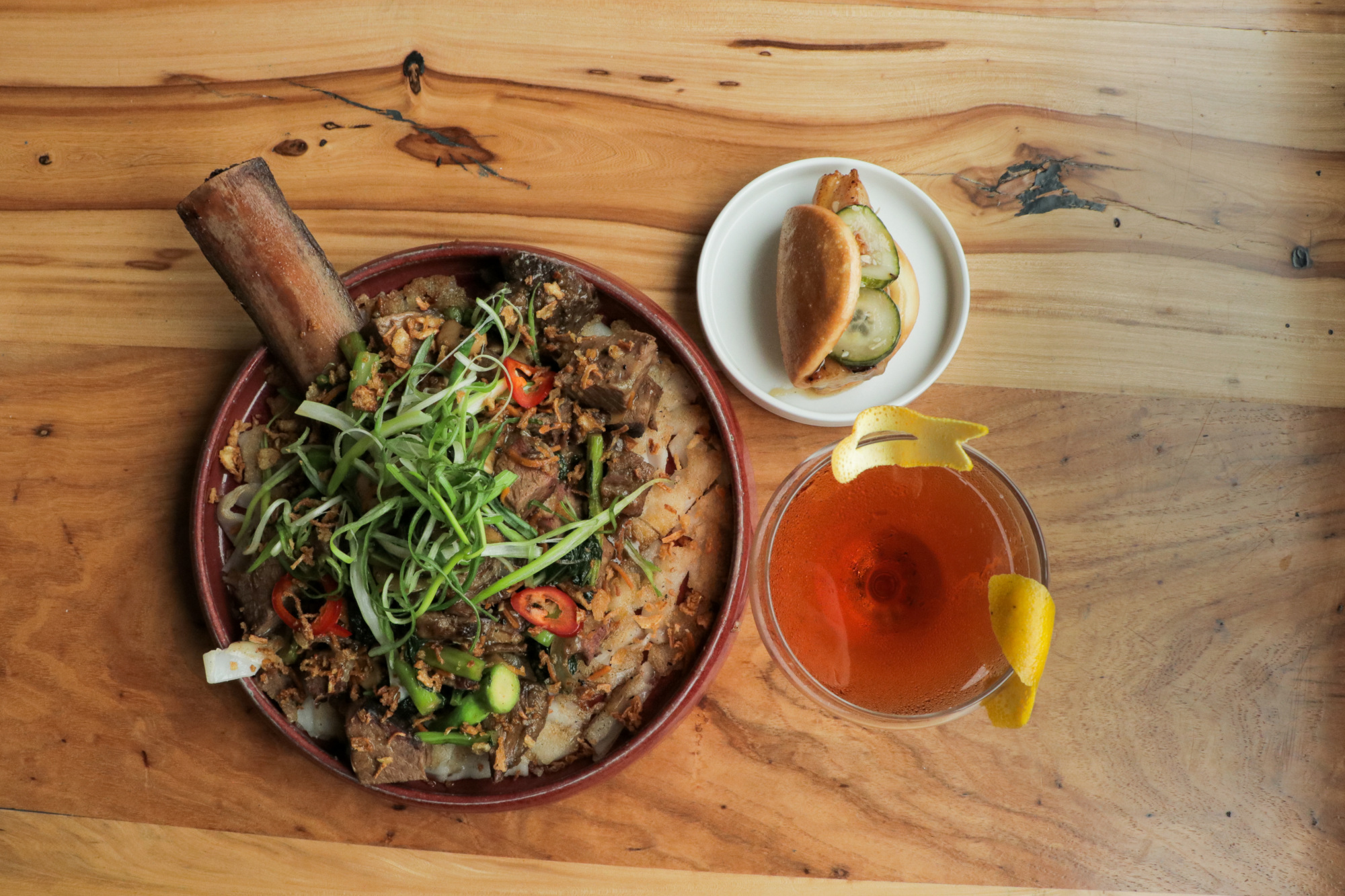
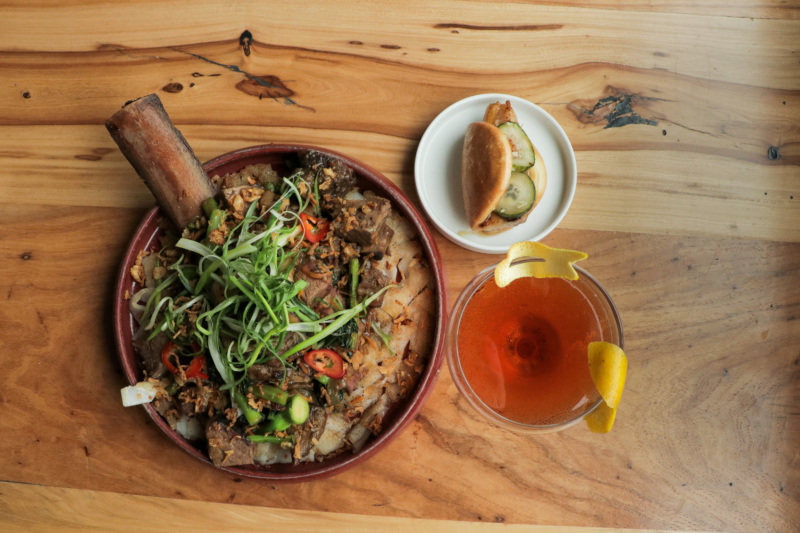
5. Smoked Beef Rib with Flat Rice Noodles
“This is a Chinese-Vietnamese hybrid with a Texan twist on it. Pan-fried rice noodles are something that you commonly find in a lot of banquet restaurants like Kim Son and Tan Tan and Sinh Sinh. But instead of doing just your regular sauteed meat, we smoke [44 Farms] beef ribs Texas barbecue-style, and then add it to the dish. I feel like it’s a very perfect marriage of Texas and Vietnamese, and it really is something that’s representative of what we’re trying to do at Xin Chao.”
Vickie An is a Houston-based freelance writer and editor covering food, culture, business, and innovation. Her work has appeared in Time, The Washington Post, The Guardian, and Hearst Specials, among other publications. Follow her on Twitter. Follow Resy, too.


